Note: typo on page 5 – the final concert of the year will be in April 2014 not April 2013.
@@@@@@@@@@@@@@

The Mishras – Pandit Shivnath Mishra & Deobrat Mishra (Sitars), Prashnat Mishra (Tabla), Sunday May 12, 2013, 7:30pm at Centre 64.
It seems that to be an Indian Classical Musician one needs to be born into the family “business”. It also helps if one is dedicated to many, many hours of hard practice. The great Indian Sarod player Ali Akbar Khan belonged to a family dynasty of musicians and started his formal studies as a vocalist at the age of 3. His lessons with his farther extend over the entire length of each day. The sitar player Ravi Shankar and his daughter Anoushka are another well known inter-generational family of Indian classical musicians. To this list we can add The Mishras who were in Kimberley for a concert at Centre 64. With 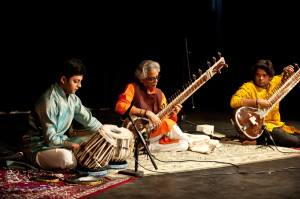 the grandfather Pandit Shivnath Mishra, the son Deobrat Mishra and the nephew Prashant Mishra it was a rare opportunity to hear an inter-generational family of Indian musicians sharing their music with the world. This is their second visit to Kimberley. Deobrat and Prashant performed at Centre 64 back in 2010. (for the review and images from that concert go to the link The Mishras ). At that time the Tabla player Prashant was still in his teens. For this concert the two younger musicians were joined by the grandfather Shivnath on one of his rare trips outside his native home in Benares, India. For this particular performance they performed the raga GWATI as the first half of their program. Normally an Indian raga can go for several hours but as a concession to western audiences they are usually shortened. That being said this raga lasted around 60 minutes. That is somewhat longer than your average 3 minute pop tune. As with their previous concert the second half of the program was dedicated to shorter pieces that included a composition dedicated to Holi, the Indian Festival of Colors, a composition dedicated to Shiva and another in keeping with our wonderful mountain scenery. The Mishras intend to resume their teaching agenda in Nelson in the near future and should be back through this region next year. Here are some more images from the concert (click for a larger view).
the grandfather Pandit Shivnath Mishra, the son Deobrat Mishra and the nephew Prashant Mishra it was a rare opportunity to hear an inter-generational family of Indian musicians sharing their music with the world. This is their second visit to Kimberley. Deobrat and Prashant performed at Centre 64 back in 2010. (for the review and images from that concert go to the link The Mishras ). At that time the Tabla player Prashant was still in his teens. For this concert the two younger musicians were joined by the grandfather Shivnath on one of his rare trips outside his native home in Benares, India. For this particular performance they performed the raga GWATI as the first half of their program. Normally an Indian raga can go for several hours but as a concession to western audiences they are usually shortened. That being said this raga lasted around 60 minutes. That is somewhat longer than your average 3 minute pop tune. As with their previous concert the second half of the program was dedicated to shorter pieces that included a composition dedicated to Holi, the Indian Festival of Colors, a composition dedicated to Shiva and another in keeping with our wonderful mountain scenery. The Mishras intend to resume their teaching agenda in Nelson in the near future and should be back through this region next year. Here are some more images from the concert (click for a larger view).
@@@@@@@@@@@@@@@@@@@
Recently Tom Bungay and Gene Anderson (The East-West Connection) were invited to 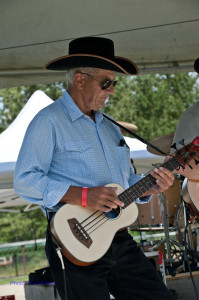 perform at a recent outdoor event in the Kimberley Platzl. While they were kicking back and taking in the sights Gene, who is a bass player, noted that he could hear a bass but couldn’t see one in the group performing. He was right. There were bass lines riding in the band without a bass in sight. Larry Tuck of Tuck’s Troubadours, for a number of reasons, had forsaken his bass guitar for a Bass Ukulele. He is the first, and only musician that I know of in this area, who has gone down that route. I suspect he will not be the last to take on this light weight alternative to the bass guitar. Below is a review of the Karla U-Bass by Greg Olwell. I have lifted this from the most recent edition of Acoustic Guitar.
perform at a recent outdoor event in the Kimberley Platzl. While they were kicking back and taking in the sights Gene, who is a bass player, noted that he could hear a bass but couldn’t see one in the group performing. He was right. There were bass lines riding in the band without a bass in sight. Larry Tuck of Tuck’s Troubadours, for a number of reasons, had forsaken his bass guitar for a Bass Ukulele. He is the first, and only musician that I know of in this area, who has gone down that route. I suspect he will not be the last to take on this light weight alternative to the bass guitar. Below is a review of the Karla U-Bass by Greg Olwell. I have lifted this from the most recent edition of Acoustic Guitar.
“Sometimes you show up for a picking session and you’re out of luck. There are already too many guitarists and you don’t want to add another six-string to the party, but hey look, nobody’s playing bass! Or, maybe your home recordings need some low end and you want an easy-to-play bass with a big sound. If this sounds familiar, the U-Bass from the ukulele specialists at Kala Brand may be just what you need. With its small size, the U-Bass is easy to carry and play, and when played through an amp, produces a big bass sound.
With its small body, ultrashort 21-inch scale (compared to a typical Fender-style bass’s 34-inch scale), and thundering plugged-in bass sound, the U-Bass defies all sense of proportion. However, spend a little time with one and you may quickly find that the U-Bass moves past “brain-warping novelty bass” to become an inviting instrument that could be a very useful and inspiring tool. Kala has an extensive line of U-Basses, with different woods and body shapes (traditional, cutaways, and solid bodies), as well as fretless versions. We checked out the entry-level U-Bass-SMHG – Mahogany, Baritone-Uke Size Body
Though Kala never refers to this instrument as a “ukulele bass,” coming from a company that is one of the biggest players riding the current wave of ukulele mania, it’s hard to think of this instrument any other way. Roughly the size of a baritone ukulele, the U-Bass has a slightly longer neck (a 21-inch scale versus a baritone uke’s 19-inch scale), and the mahogany neck, with 12 frets to the body, is stout, feeling much more like a full-size bass guitar neck than that of a ukulele.
The U-Bass’s body is built with a solid flamed mahogany top and solid mahogany back and sides. The top and back are bound with tortoiseshell-color plastic and the sound hole is ringed by a simple white rosette. The frets were nicely dressed, never causing a buzz and free of sharp edges. One of the U-Bass’s unusual features is the small hatch on the back, directly behind the bridge area, which allows the instrument’s unique rubber strings to be fed through the top and bridge.
To amplify the U-Bass, Kala chose Shadow electronics, consisting of a Nanoflex under saddle pickup and small preamp mounted on the bass’s side, with a chromatic tuner and controls for volume and tone. The preamp is powered by a pair of CR2032 button batteries, which are loaded through a small sliding compartment near the standard end pin jack.
Unique Strings: The heart of the U-Bass’s one-of-a-kind feel and sound is its strings. Thick and stretchy like gummy worms, the U-Bass’s polyurethane strings have a smooth, slick texture and are a nice evolution from the sticky silicone strings used on the U-Bass’s ancestor, the Ashbory Bass, a minuscule bass sold by Guild and later DeArmond. The strings’ elasticity, low tension, and super thick gauges are key to the bass’s gloriously thuddy sound, but the very same qualities that yield a convincing upright bass sound also require frequent tuning. They’re just so stretchy and roly-poly under your fingers that changes in temperature or humidity, or enthusiastic playing, can knock them out of tune faster than you might be accustomed to with steel strings. So, I appreciated the high-quality Hipshot Ultralite tuning machines, on board tuner, and Graph Tech nut for making tuning easy. Though the U-Bass comes with a Graph Tech nut, which should help the strings slide smoothly across the nut during tuning, I took the additional step of equalizing the tension on either side of the nut by gently lifting the strings slightly above the nut. I found this helped cut down on intonation changes during playing.Thanks to its size, guitarists might have an easy time adapting to this small bass. The spacing is tighter than a typical guitar, but it feels friendly and was easy to get used to. The neck shape felt familiar, too, and made playing for extended periods comfortable.
Little Bass, Big Boom: With its tiny body and big, flappy strings, the U-Bass has an acoustic volume that’s fine for plucking at home, but it probably won’t be loud enough to compete with most other acoustic instruments. You’ll need an amp for that and when you plug in, you’ll find that the bass’s real strength is its plugged-in sound. At low volumes, you’re probably fine playing through a standard acoustic amp, though higher levels would benefit from a dedicated bass amp. I played the U-Bass through Fender Bassman TV and SWR Baby Blue bass amps at a few rehearsals with my jazz big band and experienced a bit of cognitive dissonance: the plugged-in sound from this laughably small bass was as authoritative as James Earl Jones’s voice. When I switched from amplified upright bass to the U-Bass during our louder, more rocking songs, the sound from the little bass was nothing short of thunderous. Even plugged into my amp’s active input, which attenuates some input signal, the Shadow pickup’s output was tremendous, requiring me to lower my amp’s volume from the upright’s setting. The U-Bass had some of the most delicious, no-nonsense fundamental bass tone imaginable. Even with the onboard electronics’ tone control turned up to its most treble-heavy setting, the tone was pure, thick fundamental, nearly free of all the upper-end information acoustic guitarists crave for a sparkly sound. Instead of creating a lacy, high-end sound, turning the tone control up gave the U-Bass a little more click on the notes’ attack, which helped provide more right-hand detail. But, for my ears, I preferred the onboard tone control down in its lower half, which trims the high-end, much like a tone control does on an electric guitar, leaving a thick, supportive sound. For a bass player, this meat-and-potatoes sound is the foundation you’ll need for most of your bass lines. I also never had a problem with feedback; even when I tried to induce it, the little guy wouldn’t cooperate.
Take It Along: For anyone who needs an acoustic bass, or simply wants to explore the beauty of some low-end sounds, the Kala U-Bass should be high on your list of basses to demo. You won’t need to be in a ukulele band to pull it off either—several top-shelf bassists, like Bakithi Kumalo, Leland Sklar, and Abe Laboriel, have discovered the charm of the U-Bass and use it regularly onstage in a variety of venues. Far beyond novelty, the U-Bass is a real-deal bass, built well to deliver serious thunder. The best part? Its tiny size makes it perfect to carry along with your acoustic guitar gear, in case the jam calls for something besides another guitar.
SPECS: Four-string miniature acoustic bass. Solid mahogany top, back, and sides. Mahogany neck. Rosewood fingerboard and bridge. Graph Tech nut. 21-inch scale. 1 13/16-inch nut width. Matte finish. Hipshot Ultralite tuners. Pahoehoe polyurethane strings. Shadow Nanoflex bridge pickup with SH NFX EQ-T onboard active electronics. Made in China.
PRICE: $660 list/$550 street.
MAKER: Kala Brand Music: (877) 853-3853; kalabrand.com.”
Although in the review the price is listed as $550-$660 a quick search on the internet yielded prices that were significantly under $400. That sounds like a hell of a deal for anyone interested in experimenting with the instrument.
Check the YouTube video in the on-line review Karla U-Bass
@@@@@@@@@@@@@@@@@@
2013/05/21 – this just in – Mike and Anie Hepher at the CLAWHAMMER GALLERY are now an official Kala dealer so they can get that bass uke and any other uke gear in. They stock about 6-10 ukes at any given time. as well as accessories like straps and strings and tuners. Thanks for the info Mike.
@@@@@@@@@@@@@@@@@@
Locals Coffee House May 4, 2013 7:30 pm at the Studio / Stage Door in Cranbrook.
Every musician, regardless of genre, needs to get to grips with the music of Bach. On a similar, but not as an intense a note, every tune-smith or purveyor of traditional music should pay some attention to the music of Stephen Foster. His tunes have been around for over 150 years so they must have some merit. In fact his songs and tunes are a goldmine 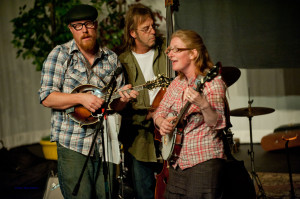 of material for re-interpretation and performance. Case in point. At the LOCALS Coffee House on Saturday night, late in the program, RedGirl (Mike and Anie Hepher with Steve Jones) took to the stage and kicked off their set with Stephen Foster’s Angeline the Baker. From the moment that Mike’s delicate muted mandolin intro sounded they had me. For me this was a complete re-invention of a tune that we have been kicking around for years. But Mike’s vocal and mandolin, Anie’s clawhammer banjo and Steve’s bass playing took the song to a whole new level. As a band RedGirl has been around for a number of years and like all great musicians they continue to evolve. The new format (at least to my ears) of the band is a more stripped down acoustic version of their former self. On this particular night the emphasis on mandolin, clawhammer banjo and ukulele was a pure delight. I hope they are planning a recording session in the near future. But I am getting
of material for re-interpretation and performance. Case in point. At the LOCALS Coffee House on Saturday night, late in the program, RedGirl (Mike and Anie Hepher with Steve Jones) took to the stage and kicked off their set with Stephen Foster’s Angeline the Baker. From the moment that Mike’s delicate muted mandolin intro sounded they had me. For me this was a complete re-invention of a tune that we have been kicking around for years. But Mike’s vocal and mandolin, Anie’s clawhammer banjo and Steve’s bass playing took the song to a whole new level. As a band RedGirl has been around for a number of years and like all great musicians they continue to evolve. The new format (at least to my ears) of the band is a more stripped down acoustic version of their former self. On this particular night the emphasis on mandolin, clawhammer banjo and ukulele was a pure delight. I hope they are planning a recording session in the near future. But I am getting 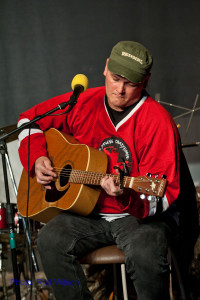 ahead of myself. They were in fact the last act in an evening of incredible music. A couple of new musical duos kicked off the night. First out of the gate was JR LIVES with Jon Bisset on guitar and vocals and Rod Wilson on Irish Bouzouki. Their selections included Carrot Juice is Murder and Neil Young’s Old Man. A couple of months back Dave Prinn (guitar and vocals) hooked up with Bill Renwick (guitar, harmonica and vocals) at an
ahead of myself. They were in fact the last act in an evening of incredible music. A couple of new musical duos kicked off the night. First out of the gate was JR LIVES with Jon Bisset on guitar and vocals and Rod Wilson on Irish Bouzouki. Their selections included Carrot Juice is Murder and Neil Young’s Old Man. A couple of months back Dave Prinn (guitar and vocals) hooked up with Bill Renwick (guitar, harmonica and vocals) at an 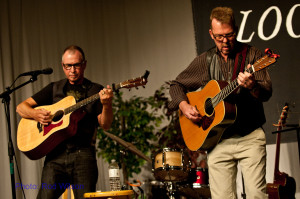 open-mic session at BJ’s Creekside Pub in Kimberley. The musical chemistry was immediate. They have cemented their musical relationship into the duo VESTED INTERESTS and I guess this was their first formal performance. Both musicians are strong guitarists and vocalists and they seem to seamlessly slip into complementary roles. With his strong performances in many sessions over the past few years Dave is the better known musician. Bill may be the lesser known but I suspect that will change. His voice is a wonderfully polished version of Neil Young, that is if Neil could actually sing. (don’t get me wrong, I like Neil Young). They kicked off their set with an Eagles tune (I missed the name), followed by a Dave Prinn original called Gonna Ride That Big Twin Home (a motor cycle trip from California to Edmonton) and Bill Renwick’s Hold Me in Your Arms Tonight. They rode out on a blaze of glory on James Taylor’s Steam Roller Blues. Tom Bungay is also a
open-mic session at BJ’s Creekside Pub in Kimberley. The musical chemistry was immediate. They have cemented their musical relationship into the duo VESTED INTERESTS and I guess this was their first formal performance. Both musicians are strong guitarists and vocalists and they seem to seamlessly slip into complementary roles. With his strong performances in many sessions over the past few years Dave is the better known musician. Bill may be the lesser known but I suspect that will change. His voice is a wonderfully polished version of Neil Young, that is if Neil could actually sing. (don’t get me wrong, I like Neil Young). They kicked off their set with an Eagles tune (I missed the name), followed by a Dave Prinn original called Gonna Ride That Big Twin Home (a motor cycle trip from California to Edmonton) and Bill Renwick’s Hold Me in Your Arms Tonight. They rode out on a blaze of glory on James Taylor’s Steam Roller Blues. Tom Bungay is also a 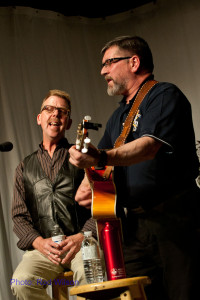 regular on the session scene and for this night’s performance he decided to take it down a notch with a couple of tribute performances dedicated to Rita MacNeil and George Jones. Dave Prinn stepped on
regular on the session scene and for this night’s performance he decided to take it down a notch with a couple of tribute performances dedicated to Rita MacNeil and George Jones. Dave Prinn stepped on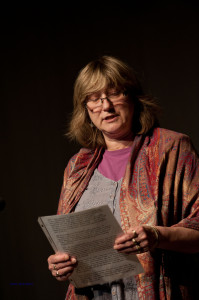 stage to sing harmony behind Tom on Rita’s Working Man. The song He Stopped Loving Her Today was the George Jones tribute. Tom’s wife Verna joined him for their masterpiece monologue / song Wave Over Wave – a very fitting tribute to the sailors of Newfoundland. Also featured was the song Jeckyl and Heyde. This is a fine piece of song writing by Tom’s eighteen year old daughter.The Quimby’s (Erin and Ferdy
stage to sing harmony behind Tom on Rita’s Working Man. The song He Stopped Loving Her Today was the George Jones tribute. Tom’s wife Verna joined him for their masterpiece monologue / song Wave Over Wave – a very fitting tribute to the sailors of Newfoundland. Also featured was the song Jeckyl and Heyde. This is a fine piece of song writing by Tom’s eighteen year old daughter.The Quimby’s (Erin and Ferdy 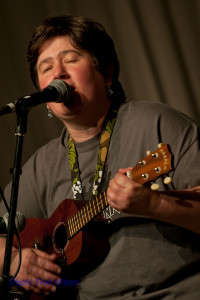 Belland) with some able help from Mike and Anie Hepher strutted out some covers of Blue Rodeo and the John Prine song called In Spite of Ourselves. This song could be, so they say, the story of their married life. Erin, like Annie (and a whole horde of other musicians) has become a devotee of the Ukulele. It is an instrument that has come out of the shadows and has become an important ingredient in “Jaiwaiin” music (ie. a mixture of island music from Jamaica and Hawaii). I am not sure under what banner James and Tristan Neve, Rob Young and Ferdy Belland are travelling but I guess Lonesome Jim is a good
Belland) with some able help from Mike and Anie Hepher strutted out some covers of Blue Rodeo and the John Prine song called In Spite of Ourselves. This song could be, so they say, the story of their married life. Erin, like Annie (and a whole horde of other musicians) has become a devotee of the Ukulele. It is an instrument that has come out of the shadows and has become an important ingredient in “Jaiwaiin” music (ie. a mixture of island music from Jamaica and Hawaii). I am not sure under what banner James and Tristan Neve, Rob Young and Ferdy Belland are travelling but I guess Lonesome Jim is a good 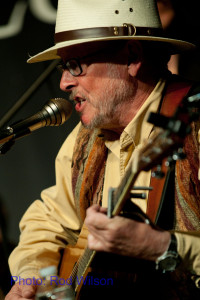 as any. As always Jame’s original songs continue to astound and on this night the band included Hold On, Passing Through Your Heart, and Take the Wheel. Also, as always, Rob Young contributed some fine lead guitar work, including some of his rarely heard slide
as any. As always Jame’s original songs continue to astound and on this night the band included Hold On, Passing Through Your Heart, and Take the Wheel. Also, as always, Rob Young contributed some fine lead guitar work, including some of his rarely heard slide 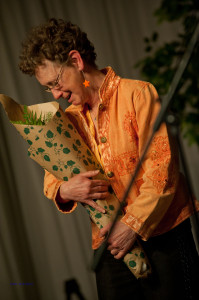 playing.
playing.
This Saturday night was the end of LOCALS 2012/2013 winter season and it was also a special night to pay tribute to Beth Crawley who was stepping down after chairing the LOCALS Committee for 15 years. Thanks Beth for all your hard work over the past years. Beth proved time and time again that by presenting local artists the quality of musicians in the area is second to none and that the Studio / Stage is a venue that captures the real essence of music – music that is unique, personal, and intimate. It is music that is shared among local musicians and their friends and deserves to be shared by the wider community.
Here are some more images from an unforgettable evening of music:
Home Grown Coffee House May 4, 2013 7:30 pm at Centre 64 in Kimberley.
Unfortunately I haven’t yet found a way to be in two places at the same time so I had to make a choice. Which Coffee House should I attend? LOCALS or HOME GROWN ? LOCALS was closer to home and I was performing there in a duo with Jon Bisset (JR Lives) so that decided the issue. Still it would have been nice to attend both.
@@@@@@@@@@@@@@@
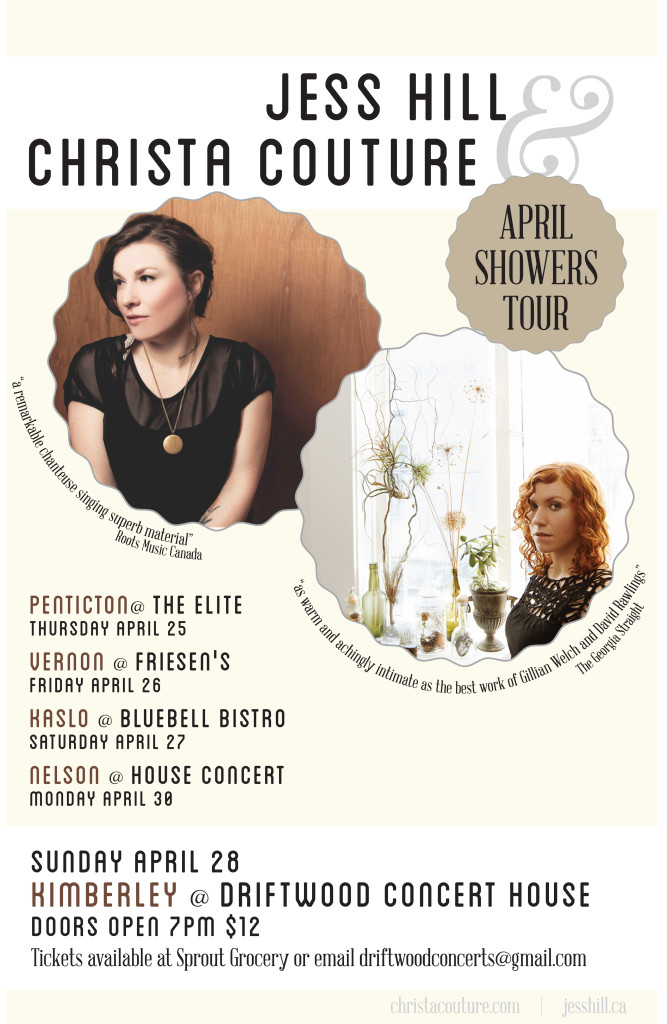 For the Kimberley stop off in this mini-tour the weather co-operated fully. It was a gorgeous spring weekend with the April showers descending on the Driftwood Concert House just as the concert began. For this last concert of the Driftwood Concert House Spring Series Christa Couture and Jess Hill, both ladies from Vancouver, treated the audience to a fine selection of original material. Of the two performers Jess Hill (guitar and vocals) who opened the evening, was closer to the folky singer /song writing tradition of the likes of Joni Mitchell. The songs, tunes, words and delivery may have been different but this was familiar territory. During her performance she, in part, explored her fascination
For the Kimberley stop off in this mini-tour the weather co-operated fully. It was a gorgeous spring weekend with the April showers descending on the Driftwood Concert House just as the concert began. For this last concert of the Driftwood Concert House Spring Series Christa Couture and Jess Hill, both ladies from Vancouver, treated the audience to a fine selection of original material. Of the two performers Jess Hill (guitar and vocals) who opened the evening, was closer to the folky singer /song writing tradition of the likes of Joni Mitchell. The songs, tunes, words and delivery may have been different but this was familiar territory. During her performance she, in part, explored her fascination 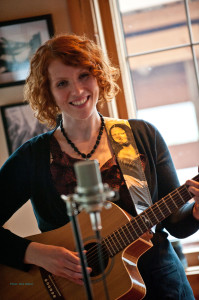 with moths. One of the songs, An Open Letter to My Heart, she used the insect’s behavior as a metaphor for her love life. The imagery revolved around a moth’s navigational skills being dominated by the light of the moon in much the same way as in human emotions “Love still lights the way”. In both instances a miscalculation can lead to getting lost or even burnt. Another song, with a slight blues inflection, was the result of a lay over in Paris on a long trip back from Africa. This is her mother’s favorite and it is easy to see why. A couple of the nice lines in the song included ” I’ve got to be sure my shadow keeps up with me” and “a shadow makes good company”. In the audience participation number the chorus of the song “My, oh My Baby” got an immediate response without too much coaxing. The lines “fox in the meadow and the wolf in the woods” and “It’s no surprise the stars have eyes” were also nice images. A nice feature of her guitar accompaniments was her delicate finger picking.
with moths. One of the songs, An Open Letter to My Heart, she used the insect’s behavior as a metaphor for her love life. The imagery revolved around a moth’s navigational skills being dominated by the light of the moon in much the same way as in human emotions “Love still lights the way”. In both instances a miscalculation can lead to getting lost or even burnt. Another song, with a slight blues inflection, was the result of a lay over in Paris on a long trip back from Africa. This is her mother’s favorite and it is easy to see why. A couple of the nice lines in the song included ” I’ve got to be sure my shadow keeps up with me” and “a shadow makes good company”. In the audience participation number the chorus of the song “My, oh My Baby” got an immediate response without too much coaxing. The lines “fox in the meadow and the wolf in the woods” and “It’s no surprise the stars have eyes” were also nice images. A nice feature of her guitar accompaniments was her delicate finger picking.
The poster had Christa Couture (vocals, guitar and piano) defined as a Chanteuse. The New Penguin English Dictionary’s definition of the word is: “Chanteuse /shon’tuhz-/ noun (pl Chanteuses) a female nightclub or cabaret singer”. In the vernacular she would 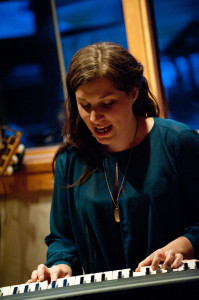 be described as a singer/song writer. However, the word Chanteuse with its urbane nuance, is probably a more accurate reflection of her material and delivery. Songs included You Know I Don’t Play Piano, Parasite, and The Boy Down the Bayou. In the very near future Christa will be off on a tour of the EU and the UK. Almost as we speak her latest CD The Living Record is being released (April 29th, 2013) in the UK. Here are some more images from The Driftwood Concert House and the evenings performance.
be described as a singer/song writer. However, the word Chanteuse with its urbane nuance, is probably a more accurate reflection of her material and delivery. Songs included You Know I Don’t Play Piano, Parasite, and The Boy Down the Bayou. In the very near future Christa will be off on a tour of the EU and the UK. Almost as we speak her latest CD The Living Record is being released (April 29th, 2013) in the UK. Here are some more images from The Driftwood Concert House and the evenings performance.
@@@@@@@@@@@@@@@@
La Cafamore String Quartet at the Knox Presbyterian Church,
April 20, 2013, 7:30pm
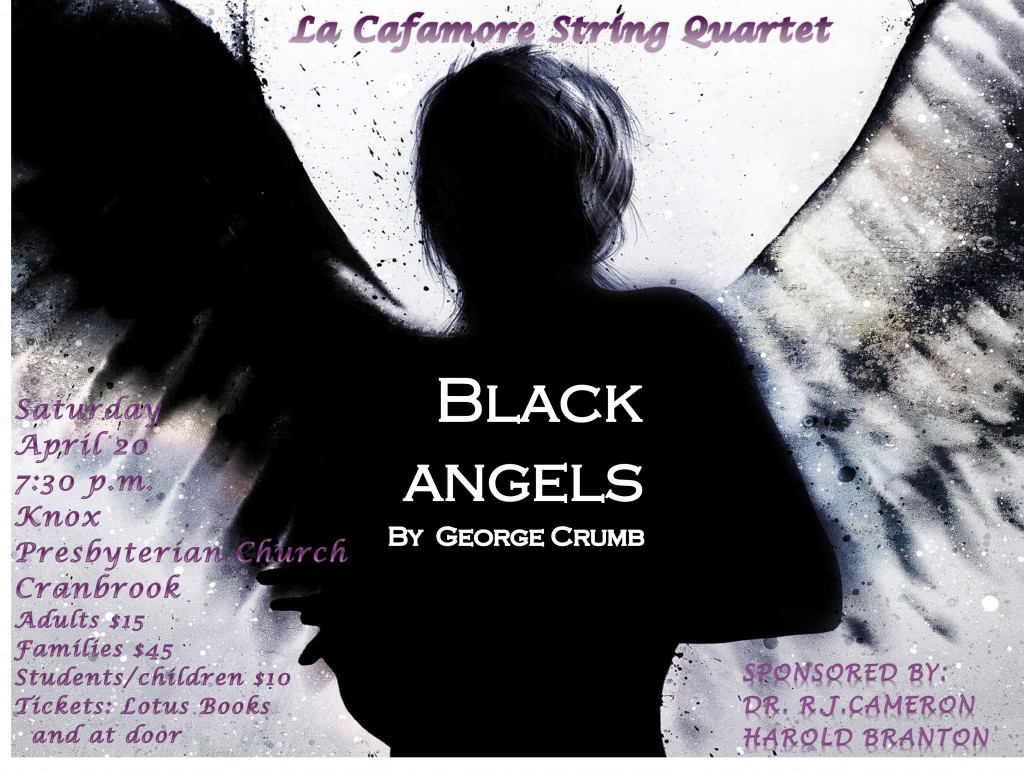 Collectively musicians and their dedicated audiences are a conservative lot. It seems that the music we are introduced to between the ages of fifteen and thirty years becomes the sound track of our lives. If you are a baby boomer then the chances are that Classic Rock is your sound track. For those born a little later probably it will be Heavy Metal. Likewise musicians reflect what they have been exposed to either as a listener or as a journeyman while they are learning their craft. Jazz musician usually rattle around in the cage of be-bop or the immediate post bop schools of John Coltrane and Miles Davis. Classical musicians are completely embedded in the Romantic and post Romantic schools of music. So, I guess, it explains the popularity of Tribute Bands, the never ending revivals of the same
Collectively musicians and their dedicated audiences are a conservative lot. It seems that the music we are introduced to between the ages of fifteen and thirty years becomes the sound track of our lives. If you are a baby boomer then the chances are that Classic Rock is your sound track. For those born a little later probably it will be Heavy Metal. Likewise musicians reflect what they have been exposed to either as a listener or as a journeyman while they are learning their craft. Jazz musician usually rattle around in the cage of be-bop or the immediate post bop schools of John Coltrane and Miles Davis. Classical musicians are completely embedded in the Romantic and post Romantic schools of music. So, I guess, it explains the popularity of Tribute Bands, the never ending revivals of the same 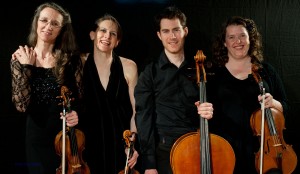 popular musicals and the stagnation of the Classical Symphony Orchestra Repertoire. So it is like a breathe of fresh air when the local ensemble La Cafamore String Quartet (Carolyn Cameron, Angele Synde, Jeff Faragher, & Alexis Moore) attempts to blow the wax out of our ears with some pretty adventurous programming. They tour through the Kootenays every spring and fall and during each tour they bring to audiences music that is fresh and challenging. For me the high light of their program last spring was Steve Reich’s Different Trains. This spring they have tried to out do themselves with George Crumb’s “Black Angels” and Schubert’s String Quartet in D Minor – “Death and the Maiden”. On the surface this would seem to be sombre fare for an evening’s entertainment. And yet, by no stretch of the imagination was this program a “snoozer”. The stage with its black backdrop and the Black Angel motif set the atmosphere for the processional entrance of Gabriel’s Message (a Basque Christmas Carol). I am not sure how a cello player manages to master the art of holding and bowing his instrument while marching but, whatever the technique required, it did not appear to be a
popular musicals and the stagnation of the Classical Symphony Orchestra Repertoire. So it is like a breathe of fresh air when the local ensemble La Cafamore String Quartet (Carolyn Cameron, Angele Synde, Jeff Faragher, & Alexis Moore) attempts to blow the wax out of our ears with some pretty adventurous programming. They tour through the Kootenays every spring and fall and during each tour they bring to audiences music that is fresh and challenging. For me the high light of their program last spring was Steve Reich’s Different Trains. This spring they have tried to out do themselves with George Crumb’s “Black Angels” and Schubert’s String Quartet in D Minor – “Death and the Maiden”. On the surface this would seem to be sombre fare for an evening’s entertainment. And yet, by no stretch of the imagination was this program a “snoozer”. The stage with its black backdrop and the Black Angel motif set the atmosphere for the processional entrance of Gabriel’s Message (a Basque Christmas Carol). I am not sure how a cello player manages to master the art of holding and bowing his instrument while marching but, whatever the technique required, it did not appear to be a 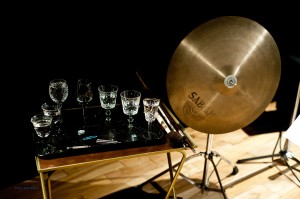 great challenge for Jeff Faragher. The stage props of crystal glasses, cymbals, gongs, metal thimbles and a displayed score that looked like a work of art were an intriguing teaser for what was to come. Make no mistake Black Angels is a very modern piece of music. The opener for the composition was entitled Threnody I: Night of the Electric Insects and it would have been right at home on the sound track of John Cronenberg’s The Naked Lunch. This was not tuneful music, and as Jeff mentioned in his introduction, it wasn’t meant to be. The composer’s intention was to make us feel uncomfortable. The full title for George Crumb’s Black Angels is “Thirteen Images from the Dark Land”. Here is a quote from the CD liner notes of the famous recording of BLACK ANGELS by THE KRONOS QUARTET: “BLACK ANGELS is probably the only quartet to have been inspired by the Vietnam War. The work draws from an arsenal of sounds including shouting, chanting, whistling, whispering, gongs, maracas and crystal glasses. The score bears two inscriptions: in tempore belli (in time of war) and Finished on Friday the Thirteenth, March 1970. BLACK ANGELS was conceived as a kind of parable on our
great challenge for Jeff Faragher. The stage props of crystal glasses, cymbals, gongs, metal thimbles and a displayed score that looked like a work of art were an intriguing teaser for what was to come. Make no mistake Black Angels is a very modern piece of music. The opener for the composition was entitled Threnody I: Night of the Electric Insects and it would have been right at home on the sound track of John Cronenberg’s The Naked Lunch. This was not tuneful music, and as Jeff mentioned in his introduction, it wasn’t meant to be. The composer’s intention was to make us feel uncomfortable. The full title for George Crumb’s Black Angels is “Thirteen Images from the Dark Land”. Here is a quote from the CD liner notes of the famous recording of BLACK ANGELS by THE KRONOS QUARTET: “BLACK ANGELS is probably the only quartet to have been inspired by the Vietnam War. The work draws from an arsenal of sounds including shouting, chanting, whistling, whispering, gongs, maracas and crystal glasses. The score bears two inscriptions: in tempore belli (in time of war) and Finished on Friday the Thirteenth, March 1970. BLACK ANGELS was conceived as a kind of parable on our 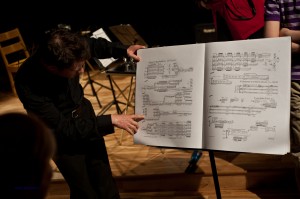 troubled contemporary world. The work portrays a voyage of the soul. The three stages of the voyage are Departure (fall from grace), Absence (spiritual annihilation) and Return (redemption)”. George Crumb is an American who composed this piece at the height of the war in Vietnam so the darkness of the music is understandable. During the intermission the quartet’s cellist Jeff Faragher walked the audience through some aspects of the composer’s score. It was a fascinating document that looked more like a piece of art than a musical score. In the second half of the program and Schubert’s “Death and the Maiden” the quartet returned to the readily recognizable musical vocabulary of the Romantic Era. The second movement of the quartet uses the theme from one of Schubert’s songs of the same name. Overall the mood of the evening may have been dark but the execution of the music was full of interesting musical techniques, sounds and explorations. The music was a far cry from polite string quartet wedding music and a planet away from your standard FM Classic Rock radio music. This was an evening of truly adventurous music.
troubled contemporary world. The work portrays a voyage of the soul. The three stages of the voyage are Departure (fall from grace), Absence (spiritual annihilation) and Return (redemption)”. George Crumb is an American who composed this piece at the height of the war in Vietnam so the darkness of the music is understandable. During the intermission the quartet’s cellist Jeff Faragher walked the audience through some aspects of the composer’s score. It was a fascinating document that looked more like a piece of art than a musical score. In the second half of the program and Schubert’s “Death and the Maiden” the quartet returned to the readily recognizable musical vocabulary of the Romantic Era. The second movement of the quartet uses the theme from one of Schubert’s songs of the same name. Overall the mood of the evening may have been dark but the execution of the music was full of interesting musical techniques, sounds and explorations. The music was a far cry from polite string quartet wedding music and a planet away from your standard FM Classic Rock radio music. This was an evening of truly adventurous music.
Way, way back in the days before laptop computers were even in the realm of SciFi Gunther Schuller coined the phrase “Third Stream” to describe the emerging musical hybrid of Jazz and Classical music. The idea has probably lost relevance in this day and age and yet, the idea of “musical streams” is as good a way as any to describe the music scene. In the local sense there is “mainstream” music that is largely the focus of the Key City Theatre, various educational programs and associated festivals. Without wishing to be unkind this is a somewhat bland amalgam of just about anything that passes for music these days. Then there is the testosterone driven “heavy metal rock” stream that seems to have found a new home in the Byng Roadhouse. This music is certainly not bland but rather goes to the opposite extreme where audiences risk deafness and burst eardrums at almost every performance. Then down a notch from that is the “open mic / jam session” stream that is mostly classic rock with bits of folk/rock and country thrown into the mix. There is a fourth stream that flows mostly under the radar stream. This is usually very original, intelligent, and, usually, acoustic music (whatever that means these days) and is practiced by a huge number of wandering performers and troubadours who scratch out a marginal living as travelling musicians. Over the years Gord Johnson and Terry Miller have promoted a superb number of concerts in the Beannick Subscription Concert Series that utilizes this important source of talent. Also over the last few years the La Cafamore String Quartet from Nelson has toured the area regularly with classical programs that are definitely outside the box. All of the above utilize established concert halls and licensed 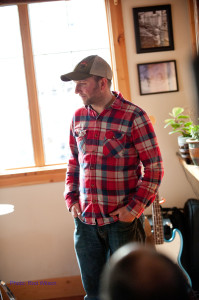 establishments. What is new on the local scene, and one that opens up a whole new palette of sonic sensibilities, is the house concert series sponsored by Jen and Darin Welch at the Driftwood Concert House. Jen and Darrin also dip into that pool of travelling musicians and their primary focus appears to be the promotion of the singer/song writing tradition. Dave Newberry and the Nautical Miles was the fourth house concert in the series. I attended the previous concert by Belle Plaine and that was a wake up call for me as to the potential of the house concert concept. For this, the latest concert in the series, David Newberry and the Nautical Miles from Vancouver delivered an evening of superb acoustic music. A step away from the almost worn out standard rock quartet (bass, drums, rhythm and lead guitars) the band utilized the talents
establishments. What is new on the local scene, and one that opens up a whole new palette of sonic sensibilities, is the house concert series sponsored by Jen and Darin Welch at the Driftwood Concert House. Jen and Darrin also dip into that pool of travelling musicians and their primary focus appears to be the promotion of the singer/song writing tradition. Dave Newberry and the Nautical Miles was the fourth house concert in the series. I attended the previous concert by Belle Plaine and that was a wake up call for me as to the potential of the house concert concept. For this, the latest concert in the series, David Newberry and the Nautical Miles from Vancouver delivered an evening of superb acoustic music. A step away from the almost worn out standard rock quartet (bass, drums, rhythm and lead guitars) the band utilized the talents 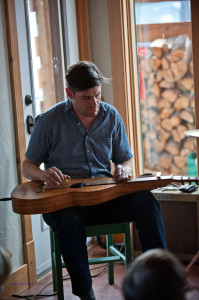 of Tim Tweedale on a Weisenborn guitar ( Weissenborn ) and Lucus Schuller on a muted drum kit to give musical textures that are virtually unheard in this day and age of over amplified music. The music was subtle, well
of Tim Tweedale on a Weisenborn guitar ( Weissenborn ) and Lucus Schuller on a muted drum kit to give musical textures that are virtually unheard in this day and age of over amplified music. The music was subtle, well 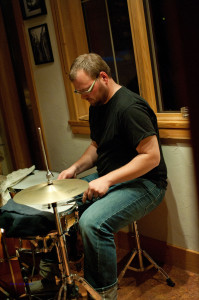 rehearsed and arranged with a wide dynamic range that was very pleasing to the ear. The band was rounded out by Corbin Murdoch playing a beautiful guitar built by Ed Bond of Vancouver (Tinker Guitars ) and Simon Rotheisler on electric bass. Song writing and vocal credits were shared by Corbin and special guest David Newberry both of whom drew inspiration from accident, incidents and the world around them. Their world seemed to be full of humor, issues and, thankfully, an absence of youthful angst. There were some whimsical songs such as I’m Sorry Dude, a song about Jack Kerouac (So it Goes), a murder ballad (Slow) and a wonderful anthem She was my Lover, a Pretty Good One for a While, that featured a rousing chorus. The songs were excellent, the sound superb and it was a thrill to hear every whisper and nuance of the music that was being spun out before your very eyes (and ears). Tim Tweedale’s playing on the Weissenborn was exquisite and I would have liked him to have done more than the one featured instrumental. Of special mention is the drummer Lucas Schuller. It is extremely rare to hear a drummer who actually knows the meaning of the phrase “musical dynamics”. From whisper soft strokes with brushes and bundles to accented sticks and mallets he is a drummer well worth a listen. Try and take in one of these house concerts over the next little while and I guarantee you will be reluctant to ever again attend concerts in any other venue. Here are some images from the concert (click for a larger view) : The next Driftwood House Concert will be on Sunday, April 28, 2013: Christa Couture w/- Jess Hill from Vancouver. Check their websites at Chris Couture Jess Hill
rehearsed and arranged with a wide dynamic range that was very pleasing to the ear. The band was rounded out by Corbin Murdoch playing a beautiful guitar built by Ed Bond of Vancouver (Tinker Guitars ) and Simon Rotheisler on electric bass. Song writing and vocal credits were shared by Corbin and special guest David Newberry both of whom drew inspiration from accident, incidents and the world around them. Their world seemed to be full of humor, issues and, thankfully, an absence of youthful angst. There were some whimsical songs such as I’m Sorry Dude, a song about Jack Kerouac (So it Goes), a murder ballad (Slow) and a wonderful anthem She was my Lover, a Pretty Good One for a While, that featured a rousing chorus. The songs were excellent, the sound superb and it was a thrill to hear every whisper and nuance of the music that was being spun out before your very eyes (and ears). Tim Tweedale’s playing on the Weissenborn was exquisite and I would have liked him to have done more than the one featured instrumental. Of special mention is the drummer Lucas Schuller. It is extremely rare to hear a drummer who actually knows the meaning of the phrase “musical dynamics”. From whisper soft strokes with brushes and bundles to accented sticks and mallets he is a drummer well worth a listen. Try and take in one of these house concerts over the next little while and I guarantee you will be reluctant to ever again attend concerts in any other venue. Here are some images from the concert (click for a larger view) : The next Driftwood House Concert will be on Sunday, April 28, 2013: Christa Couture w/- Jess Hill from Vancouver. Check their websites at Chris Couture Jess Hill
PS : a special note – The Rayco Weissenborn guitar played by Tim was built in Smithers BC ( Rayco )
@@@@@@@@@@@@@@@
 Enchanted April, full dress rehearsal at the Studio/Stage Door, Wednesday April 10, 2013, 8pm.
Enchanted April, full dress rehearsal at the Studio/Stage Door, Wednesday April 10, 2013, 8pm.
It’s a fairly common theme in life and in art. Women, mostly middle aged, become disillusioned with their hum drum life and husbands that no longer pay attention to them. They look for a way out, or at least some diversion to color their existence, and often this comes in the form of travel. To turn the old saying on it’s head “a holiday is as good as a change”. I suspect there is a whole sector of the travel industry that caters to these needs. In Australia the The Australian Woman’s Weekly, now a glossy monthly magazine with a circulation of over 500,000/issue, for years sponsored guided world tours for these jaded ladies. Any casual observation, and an ear for Aussie accents, will detect hundreds of these ladies getting off the tour buses in Jasper and Banff during the summer. In art, the play and the movie Shirley Valentine explored the jaded female theme. If you remember Shirley had resorted to talking to the wall until she packed her bags and headed off to Greece for a bit of sunshine and whatever to spice up her life. She leaves behind a well 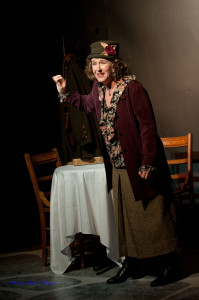 meaning, but unaware, husband who she hopes will get the message. The play Enchanted April revisits, with some variations, that same emotional territory. Lotty Wilton, played by Tracy Maguire, after a chance encounter with Rose Arnott, played by Jennifer Inglis, schemes to use her pin money to head off to Italy for some much needed R&R. To defray the cost of the castle they wish to rent they enlist the help of a very
meaning, but unaware, husband who she hopes will get the message. The play Enchanted April revisits, with some variations, that same emotional territory. Lotty Wilton, played by Tracy Maguire, after a chance encounter with Rose Arnott, played by Jennifer Inglis, schemes to use her pin money to head off to Italy for some much needed R&R. To defray the cost of the castle they wish to rent they enlist the help of a very 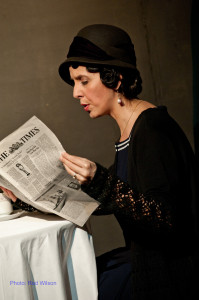 colorful but jaded socialite, Lady Caroline Bramble, played by Michelle Lemay, and an older lady, Mrs. Graves, played by Nicola Kaufman. The first half of the play revolves around their schemes, anxieties and apprehensions.
colorful but jaded socialite, Lady Caroline Bramble, played by Michelle Lemay, and an older lady, Mrs. Graves, played by Nicola Kaufman. The first half of the play revolves around their schemes, anxieties and apprehensions. 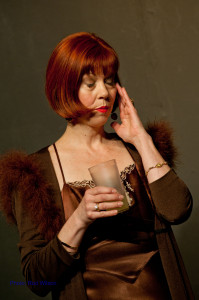 Lotty is all gungho while Rose is not so sure. Meanwhile the husbands Mellersh Wilton (Sean Swinwood) and Frederick Arnott (Peter Schalk) are mostly oblivious to the ongoing emotional dynamics. The play is set in the years immediately following World War I and the great ‘flu pandemic of 1919. There is sense of loss and aloneness that pervades the first half of the play. The director Terry Miller has done a great job of enhancing these emotions as well as invoking a dreary England with it’s never ending rain and dull interiors. He skillfully moves the first half of the play through nine scenes and eight
Lotty is all gungho while Rose is not so sure. Meanwhile the husbands Mellersh Wilton (Sean Swinwood) and Frederick Arnott (Peter Schalk) are mostly oblivious to the ongoing emotional dynamics. The play is set in the years immediately following World War I and the great ‘flu pandemic of 1919. There is sense of loss and aloneness that pervades the first half of the play. The director Terry Miller has done a great job of enhancing these emotions as well as invoking a dreary England with it’s never ending rain and dull interiors. He skillfully moves the first half of the play through nine scenes and eight 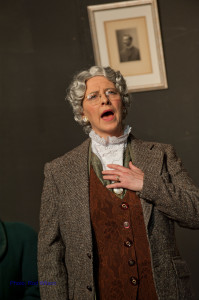 locations with only slight variations of a single set. All of that changes when the action moves to sunny Italy. I wish I hadn’t left the room for the intermission when they changed set. The contrast between dreary England and sunny Italy is astounding. I spent a good portion of the second half of the play trying to figure out how they changed the set so quickly and dramatically. The Italian sunshine, the castle, the
locations with only slight variations of a single set. All of that changes when the action moves to sunny Italy. I wish I hadn’t left the room for the intermission when they changed set. The contrast between dreary England and sunny Italy is astounding. I spent a good portion of the second half of the play trying to figure out how they changed the set so quickly and dramatically. The Italian sunshine, the castle, the 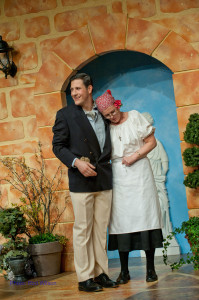 setting, the maid Constanza (Andrea Grossmand) and the owner Anthony Wilding (David Popoff) all work their magic on the ladies as they slowly undergo their respective transformations towards happy resolutions at the end of the play.
setting, the maid Constanza (Andrea Grossmand) and the owner Anthony Wilding (David Popoff) all work their magic on the ladies as they slowly undergo their respective transformations towards happy resolutions at the end of the play.
Even before the play started, while waiting for the curtain to rise (so to speak), the choice of music, prepared me for a wonderful evening. The choice of Dick Hyman, one of my very favorite piano players, created the appropriate atmosphere for the opening act. For those of us who notice these things Dick Hyman, although not a household name, is a favorite of Woody Allen and has often been featured on the sound tracks in many of his films. He is an incredibly skillful musician whose repertoire virtually run the whole gamut of jazz piano. Later, in keeping with the switch to sunny Italy, Dick Hyman took a rest and the music became decidedly Italian with a great selection from the Italian operas. Even the piano music, though not Italian (maybe Spanish), that Mellersh Wilton was “playing” off stage towards the end of the play was a delight.
Here are some more images from this delightful play – first dreary England
(click on the images for larger views).
@@@@@@@@@@@@@@@@@
Cara Luft: Live at Lotus Books, Cranbrook B.C. 7:30 pm , Wednesday April 3, 2013
On her resume Cara probably lists her occupation as “Professional Folksinger”. I know for a fact that is how she described herself to the US Customs personnel. But that is another story and it is one she tells in the song It’s Not Mine. There are not too many people in the world that could be included in the select group of “Professional Folk Singers”. Woody 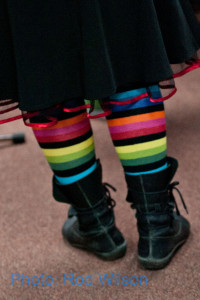 Guthrie was one. So was Pete Seeger. These were musicians that basically wandered the country, and the world, making their living by singing and writing songs that arose from that huge body of work, documented and undocumented, described as “folk music” or “traditional music”. They are basically a modern extension of an occupation that goes way back, and probably beyond, medieval times. Troubadours of old literally sang for their supper. As did the pipers, instrumentalists, story tellers and hedge poets of the old world. Cara is in pretty select company. She comes by her profession honestly.
Guthrie was one. So was Pete Seeger. These were musicians that basically wandered the country, and the world, making their living by singing and writing songs that arose from that huge body of work, documented and undocumented, described as “folk music” or “traditional music”. They are basically a modern extension of an occupation that goes way back, and probably beyond, medieval times. Troubadours of old literally sang for their supper. As did the pipers, instrumentalists, story tellers and hedge poets of the old world. Cara is in pretty select company. She comes by her profession honestly. 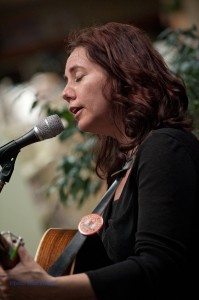 Cara was born into a family of traditional musicians. Her father is a well known banjo player and mentor of young musicians in Calgary. Cranbrook is pretty lucky to have been associated with Cara over the years. Years back she performed at Doug Erickson place out at Mayook. She has toured through the area with THE WAILING JENNINGS and done numerous solo gigs in Cranbook, Creston and Fernie over the years. Everything from a headliner act at St. Eugene Mission Casino to small gallery and small stage venues. The engagement at LOTUS BOOKS is a perfect example of Cara performing in a small intimate environment. Erin and Ferdy, the new owners of Lotus Books, re-organized the kids book section to accommodate a small performance area for the evening. Fifty five very excited patrons showed up for this the first of, hopefully, many future intimate concerts. There are not
Cara was born into a family of traditional musicians. Her father is a well known banjo player and mentor of young musicians in Calgary. Cranbrook is pretty lucky to have been associated with Cara over the years. Years back she performed at Doug Erickson place out at Mayook. She has toured through the area with THE WAILING JENNINGS and done numerous solo gigs in Cranbook, Creston and Fernie over the years. Everything from a headliner act at St. Eugene Mission Casino to small gallery and small stage venues. The engagement at LOTUS BOOKS is a perfect example of Cara performing in a small intimate environment. Erin and Ferdy, the new owners of Lotus Books, re-organized the kids book section to accommodate a small performance area for the evening. Fifty five very excited patrons showed up for this the first of, hopefully, many future intimate concerts. There are not 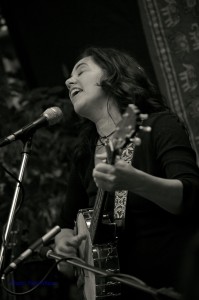 enough superlatives in the English language to truly capture the essence of a Cara Luft performance. Joyous and brilliant are two words that immediately came to mind as Cara wove a rich tapestry of stories and song into a very memorable evening. Her clawhammer banjo playing sparkled on an original piece called My Darling One as did her encore performance of The Huron Carol . In the past Cara resisted the pull of the banjo but now that she is well down that road and it is a joy to hear the steady bum-ditty-bum clawhammer banjo rhythm, the tapping of feet and the delicate melodies floating over the top of it all. If a musician must play banjo this is the style to play. And, if one is a banjo player, then one must accept that huge repertoire of “banjo jokes“ as part of the baggage. The prize of the evening came from a member of the audience – “ a terrorist group took a busload of banjo players hostage and threatened to release one every hour until their demands were met“. On guitar, Cara restored Led Zepplin’s Black Mountain Side to it`s rightful place as Bert Jansch`s interpretation of the traditional ballad Black Water Side. Also on guitar Cara revisited Davy
enough superlatives in the English language to truly capture the essence of a Cara Luft performance. Joyous and brilliant are two words that immediately came to mind as Cara wove a rich tapestry of stories and song into a very memorable evening. Her clawhammer banjo playing sparkled on an original piece called My Darling One as did her encore performance of The Huron Carol . In the past Cara resisted the pull of the banjo but now that she is well down that road and it is a joy to hear the steady bum-ditty-bum clawhammer banjo rhythm, the tapping of feet and the delicate melodies floating over the top of it all. If a musician must play banjo this is the style to play. And, if one is a banjo player, then one must accept that huge repertoire of “banjo jokes“ as part of the baggage. The prize of the evening came from a member of the audience – “ a terrorist group took a busload of banjo players hostage and threatened to release one every hour until their demands were met“. On guitar, Cara restored Led Zepplin’s Black Mountain Side to it`s rightful place as Bert Jansch`s interpretation of the traditional ballad Black Water Side. Also on guitar Cara revisited Davy 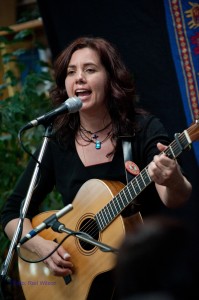 Graham`s interpretation of She Moves Through the Fair. It is great hear credit being given to such ground breaking acoustic guitarists as Bert Jansch and Davy Graham. Both of these musicians have recently passed on but their legacy is still with us. Cara has a number of strong traditional songs, including The Plough Boy and the Cockney in her repertoire. In addition she has some some original songs of her own. Her song, It`s Not Mine, is a recounting of a particularly difficult encounter with the US Customs Service. It was a tour de force of joyous audience participation and humor. The audience obviously enjoyed the evening’s show with a call for at least three encores (I lost count). For this inaugural concert at Lotus Books Ferdy and Erin chose a winner. A Cara Luft concert is an unforgettable event.
Graham`s interpretation of She Moves Through the Fair. It is great hear credit being given to such ground breaking acoustic guitarists as Bert Jansch and Davy Graham. Both of these musicians have recently passed on but their legacy is still with us. Cara has a number of strong traditional songs, including The Plough Boy and the Cockney in her repertoire. In addition she has some some original songs of her own. Her song, It`s Not Mine, is a recounting of a particularly difficult encounter with the US Customs Service. It was a tour de force of joyous audience participation and humor. The audience obviously enjoyed the evening’s show with a call for at least three encores (I lost count). For this inaugural concert at Lotus Books Ferdy and Erin chose a winner. A Cara Luft concert is an unforgettable event.
@@@@@@@@@@@@@@@
PS – I forgot to mention Cara’s rousing clawhammer version of Guns and Roses’ Sweet Child of Mine. Rock and Roll never sounds this good.
@@@@@@@@@@@@@@@
Joshua Burning at BJ’s Creekside Pub, Saturday March 30, 2013, 7:30 PM
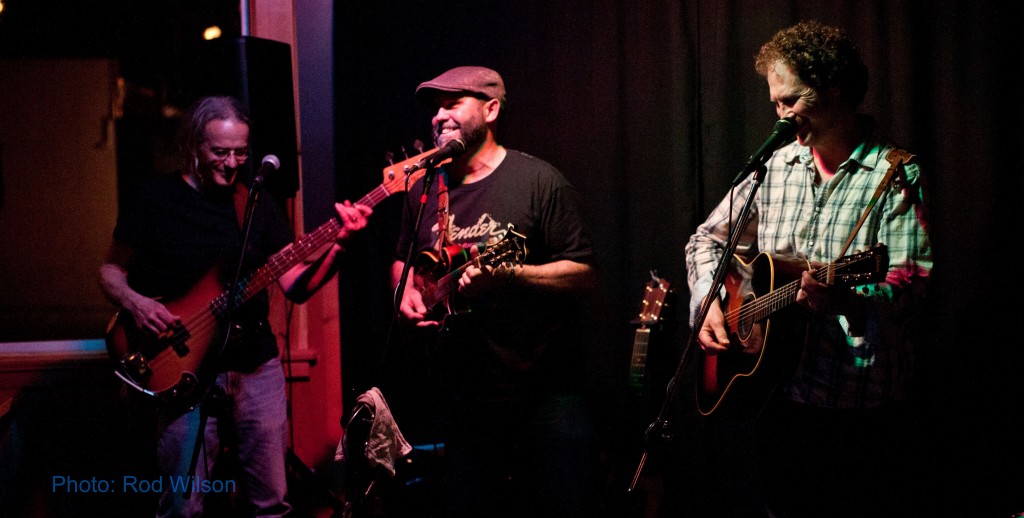 This is probably the finest configuration of acoustic musicians in the area. Over the years Keith Larsen (singer / song writer, guitar, mandolin, dobro, banjo), Garnet Waite (singer / song writer, guitar, mandolin and vocals) and Jon Gerlitz (guitar, vocals and bass guitar)
This is probably the finest configuration of acoustic musicians in the area. Over the years Keith Larsen (singer / song writer, guitar, mandolin, dobro, banjo), Garnet Waite (singer / song writer, guitar, mandolin and vocals) and Jon Gerlitz (guitar, vocals and bass guitar) 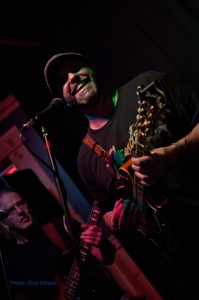 have been staples on the local music scene and only recently they have come together as the alt/country/roots band Joshua Burning. As a duo Keith and Garnet have performed under that banner for a while but recently John Gerlitz has joined them on bass guitar to fill out the sound spectrum. Keith Larsen brings to the group some of the most formidable guitar and mandolin playing to be heard in this area. He has a lot of musical experience in just about
have been staples on the local music scene and only recently they have come together as the alt/country/roots band Joshua Burning. As a duo Keith and Garnet have performed under that banner for a while but recently John Gerlitz has joined them on bass guitar to fill out the sound spectrum. Keith Larsen brings to the group some of the most formidable guitar and mandolin playing to be heard in this area. He has a lot of musical experience in just about 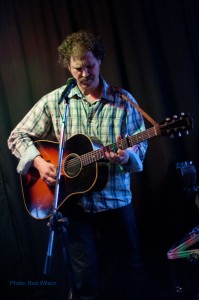 every genre one would care to name. He is part of Elena Yeung’s BlueGrass band; He has played in rock bands; performed as a solo act; Done recording session work with Heather Gemmell and is always ready pick up an instrument in any musical context. Garnet Waite has a great country voice, great song writing skills and is no less of maestro on guitar and mandolin. John Gerlitz is best
every genre one would care to name. He is part of Elena Yeung’s BlueGrass band; He has played in rock bands; performed as a solo act; Done recording session work with Heather Gemmell and is always ready pick up an instrument in any musical context. Garnet Waite has a great country voice, great song writing skills and is no less of maestro on guitar and mandolin. John Gerlitz is best 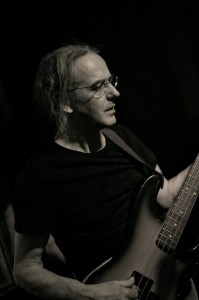 known for his old time jazz and honky-tonk vocals and finger style guitar playing. For Joshua Burning he steps out of the shadows and plays bass guitar. The band was in fine form on Saturday night and that is an understatement. They were hot with a great repertoire of rootsy/country fare, great vocals, blazing guitar and mandolin runs and arrangements that included some spectacular double leads on guitars. At one stage Keith got into some syncopated mandolin breaks that came out sounding like pretty hefty banjo playing. Although most of the repertoire was covers of mostly, to my ear, relatively unknown pieces, there were some of the usual favorites there (for instance Old Crow Medicine Show’s Wagon Wheels, Bob Dylan’s All Along the Watch Tower, and The Doobie Brothers Blackwater) that had the audience rocking along with band. Garnet was playing his dad’s old Gibson acoustic guitar and he threw a few of his originals into the mix. His High Water Channel, The Wind is a Liar were there as well as his Summer Nights with the classic line, “summer nights in a small town used to be, summer nights in a way back fantasy”. Keith also threw his original called Best Laid Plans. This was an evening of exceptionally fine acoustic music, in a fine acoustic environment, in probably one of the most comfortable little pubs into the area. The pub’s winter music program will be winding down over the next few weeks. James Neve will be hosting the last open mic session of the season on Saturday April 6, 2013. Don’t miss it. Also note the following
known for his old time jazz and honky-tonk vocals and finger style guitar playing. For Joshua Burning he steps out of the shadows and plays bass guitar. The band was in fine form on Saturday night and that is an understatement. They were hot with a great repertoire of rootsy/country fare, great vocals, blazing guitar and mandolin runs and arrangements that included some spectacular double leads on guitars. At one stage Keith got into some syncopated mandolin breaks that came out sounding like pretty hefty banjo playing. Although most of the repertoire was covers of mostly, to my ear, relatively unknown pieces, there were some of the usual favorites there (for instance Old Crow Medicine Show’s Wagon Wheels, Bob Dylan’s All Along the Watch Tower, and The Doobie Brothers Blackwater) that had the audience rocking along with band. Garnet was playing his dad’s old Gibson acoustic guitar and he threw a few of his originals into the mix. His High Water Channel, The Wind is a Liar were there as well as his Summer Nights with the classic line, “summer nights in a small town used to be, summer nights in a way back fantasy”. Keith also threw his original called Best Laid Plans. This was an evening of exceptionally fine acoustic music, in a fine acoustic environment, in probably one of the most comfortable little pubs into the area. The pub’s winter music program will be winding down over the next few weeks. James Neve will be hosting the last open mic session of the season on Saturday April 6, 2013. Don’t miss it. Also note the following
Friday / Saturday April 5/6 2013, 9:30pm: JOSHUA BURNING at the St. Eugene Mission Casino. This is part of the Casino’s on going showcase series and the resort provides a shuttle service to and from the Casino.
Here are a few more images from Joshua Burning’s performance.
@@@@@@@@@@@@@@@@@@@@@